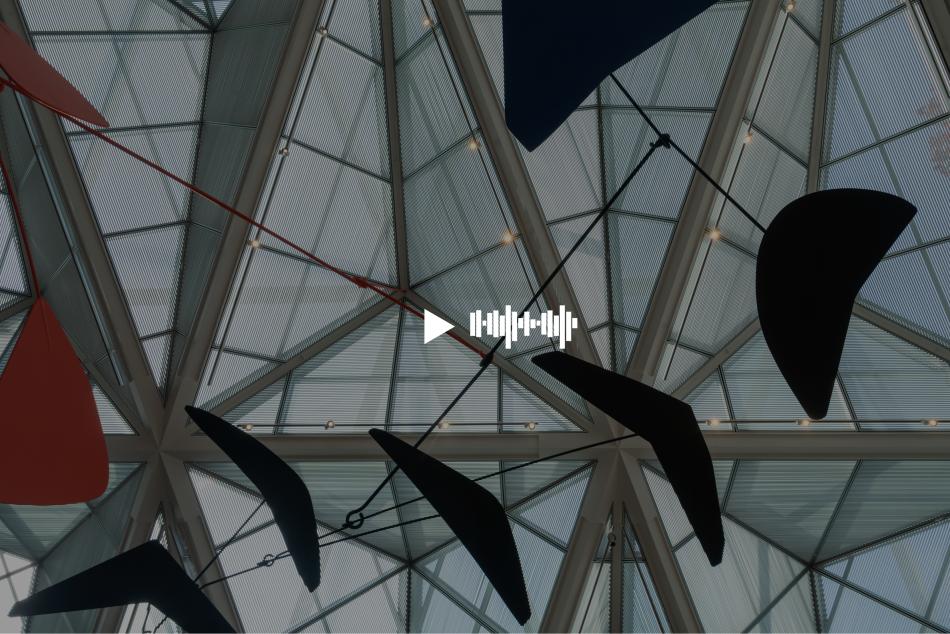NARRATOR:
The structure you see here are commonly called a French window. But look closely at the bottom left, where you’ll see the title of this work, Fresh Widow. This is not a typo!
Curator and head of modern art, Harry Cooper, explains Marcel Duchamp’s play on words.
HARRY COOPER:
This was made in 1920 in the aftermath of World War I, so it’s doubtless that Duchamp is referring to the widows created by the war. The fact that the windows are blacked-out might refer to the blackouts that were necessary during the war or to the color of mourning worn by widows.
NARRATOR:
Duchamp was famous for his “readymades,” found objects the artist presented as art. He also liked producing small, strange replicas of objects, as he did here. He believed art was something experienced, not made. Marcel Duchamp:
ARCHIVAL, MARCEL DUCHAMP:
All in all, the creative act is not performed by the artist alone; the spectator brings the work in contact with external world by deciphering and interpreting its inner qualification and thus adds his contribution to the creative act.
NARRATOR:
Duchamp was creating an experience here even as he signed this piece. Who is Rose Selavy?
HARRY COOPER:
That was an alias that he took. Pronounced in French, Rose Selavy sounds a lot like “c’est la vie.” That’s life. And “Rose” also sounds like “eros,” E-R-O-S. So, in a way, this pseudonym he took for himself could be translated as “eroticism is life.” We also know that it’s a female alter ego, and he was often photographed dressed in character as a rather elegant lady with hat and makeup. So he’s playing, not only [laughs] with the definition of art and the identity of the artist, but with gender as well.
NARRATOR:
Take a look at the work nearby: Boite-en-Valise, meaning box in a suitcase. The artist created this to be a small, portable Duchamp museum. Do you see Fresh Widow?




